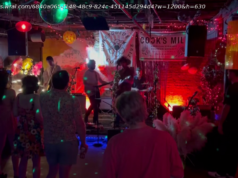MTV’s Video Music Awards certainly don’t have the same cultural impact they did back in the 1980s and 1990s, but it also turns out, they don’t have anywhere near the same audience.
MTV’s Video Music Awards certainly don’t have the same cultural impact they did back in the 1980s and 1990s, but it also turns out, they don’t have anywhere near the same audience.
According to the Hollywood Reporter, this years Video Music Awards, which aired Monday night, drew in a crowd of just 5 million viewers even though the program aired on at least eight separate Viacom-owned cable networks. On MTV alone, the awards show drew a miserable 2.25 million viewers — the smallest audience on record, and 15% lower than MTV’s audience in 2017.
Last year, the MTV awards chalked up it’s lowest audience numbers ever, but also had the unfortunate luck of airing against a „Game of Thrones“ finale episode that lasted more than two hours. This year, MTV’s biggest competition was WWE’s Monday Night Raw and an NFL pre-season game on ESPN.
Both Raw and the NFL beat MTV in ratings.
The decline may be representative of MTV’s overall loss of market share. Teens and young adults are tuning out of the network in record numbers and the Video Music Awards proved no exception to the exodus. MTV lost almost half of its viewers in the 18-35 demographic year over year; only 2.2 of the 5 million viewers were in MTV’s „target demographic,“ according to the Reporter.
There wasn’t much to turn in for, of course. This years VMA’s did not draw the stellar performances of years past, and it’s only big name star — Madonna — turned up in a bizarre Nepalese-inspired caftan and stumbled through an Aretha Franklin tribute seemingly authored by someone who’d Googled Franklin mere hours beforehand.
Otherwise, the awards show’s highlights consisted mostly of a smattering of stars wearing glued on costumes or making „brave,“ „principled“ stands against President Donald Trump that the President didn’t even Tweet about.






